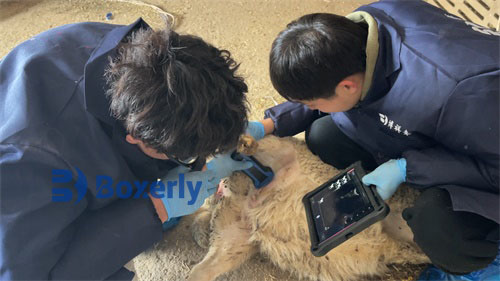Simply put, veterinary B-ultrasound color ultrasound is a high-definition black and white B-ultrasound plus color Doppler. Color Doppler ultrasound generally uses autocorrelation technology to process Doppler signals. The blood flow signals obtained by the autocorrelation technology are color-coded and superimposed on the two-dimensional image in real time, forming a color Doppler ultrasound blood flow image.
Frame rate of color ultrasound in veterinary B-ultrasound
The frame rate is the frame rate, which is the number of images displayed per second. The faster the frame rate, the more real-time the image; if the frame rate is too slow, the displayed image will show an animated phenomenon.
Penetration of color ultrasound in veterinary B-ultrasound
The penetration refers to the maximum depth that the probe can detect, that is, the maximum depth displayed by the color ultrasound image. The deeper the penetration, the better the performance of the color ultrasound.
Uniformity of color ultrasound in veterinary B-ultrasound
Uniformity refers to the uniformity of the sound field throughout the whole process, and the uniformity of the near-field, mid-field, and far-field image levels.
Color sensitivity of color ultrasound in veterinary B-ultrasound
Color sensitivity refers to the ability to detect low-speed blood flow and the ability to accurately capture instantaneous high-speed blood flow. The color sensitivity is high and the color blood flow display effect is good. The display effect of other color images also depends on the blood flow representation color, the fullness of the color blood flow, the continuity of the color and other aspects.








